Using HanaFooda Hawaii Grinds playing Cards
Free Printable Download. Complete Sakura (Hawaiian Hanafuda) Rules for Playing for Points and Yaku) Letter-sized PDF (8.5″ x 11″) – Print at home or keep it on your phone/tablet for game night.
Need a backup or replacement copy for your HanaFooda Hawaii Grinds Deck? Free Printable Download.
Setup and Dealing Cards
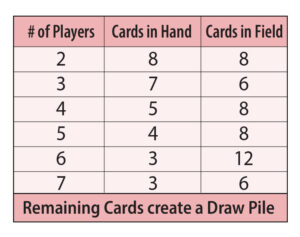
- Remove Kings, Jokers, Point & Yaku guide cards.
- Player to the Dealer’s left shuffles the cards.
- Player to the Dealer’s right cuts the cards.
- Dealer then deals the cards face down to the players and face up on the Field (table).
- The remaining cards create the draw pile.
- *If during the initial deal, four cards of the same suit appear face up on the eld (This is called a Hiki), the dealer gets to keep them. See section on Hiki Rules.
Game Play: Individuals
- Dealer goes first.
- Player starts their turn by choosing one card from their own hand to try and make a match with a card in the same Hanafuda suit on the Field.
- If there is a match, the player must lay that card on top of the card on the Field to show everyone a match was made.
- If no match is possible, the player must still choose a card from their hand and leave it face up on the Field.
- At this point some people like to collect the matched cards right away. Some people like to leave them until the end of their turn to collect them. It’s up to you.
- What is a Hanafuda Suit? There are 12 Hanafuda Suits. Each suit contains 4 cards and have a common theme. e.g. All the 6’s are a suit (Shaved Ice cards). All the Ace’s are a suit (Sushi cards).
- That same player then draws a card from the draw pile and tries to match that card to an existing card on the Field. If no matches are made with the draw card, the player leaves that card face up on the Field.
- The player collects all the matches made during their turn, keeping the point cards and discarding the non-point cards in a discard pile.
- Point cards are organized face up in front of each player.
- The next player on the right starts their turn. Play proceeds counterclockwise.
- The round ends once all the players run out of cards and the draw pile has been exhausted.
- The player with the highest score becomes the dealer for the next round.
- The game ends after the agreed number of rounds or until the agreed time limit expires. The highest total score of all the rounds combined wins.
- Due to the usage of a wild card, The Gaji Card (Wild Card), most rounds will end with a few remaining cards on the Field. These go to the player that used the Gaji Card. See Gaji Card Section for specifics.
Game Play: Teams
Same rules as above, however, teams share points, they cannot reveal their hands to teammates & they don’t sit next to each other.
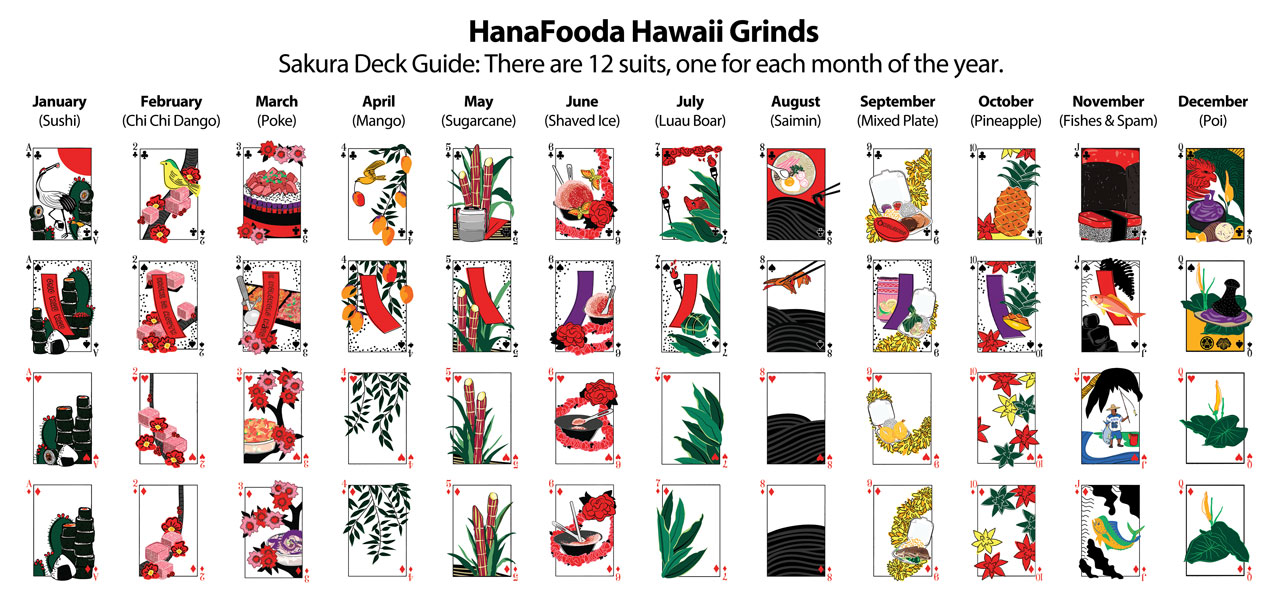
SCORING
Playing for Points Only
If you choose to play only for points and skip the yaku combinations, players count their total point cards at the end of each round. This simplified gameplay focuses on card point values, making it an ideal starting point for beginners or those familiarizing themselves with the Hanafuda Hawaii Grinds deck.

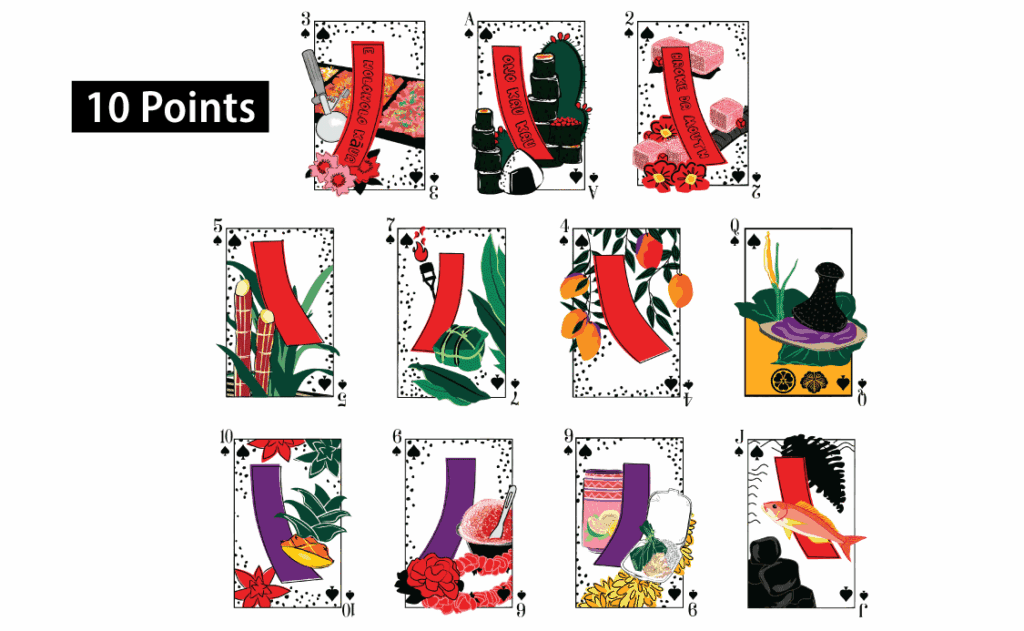
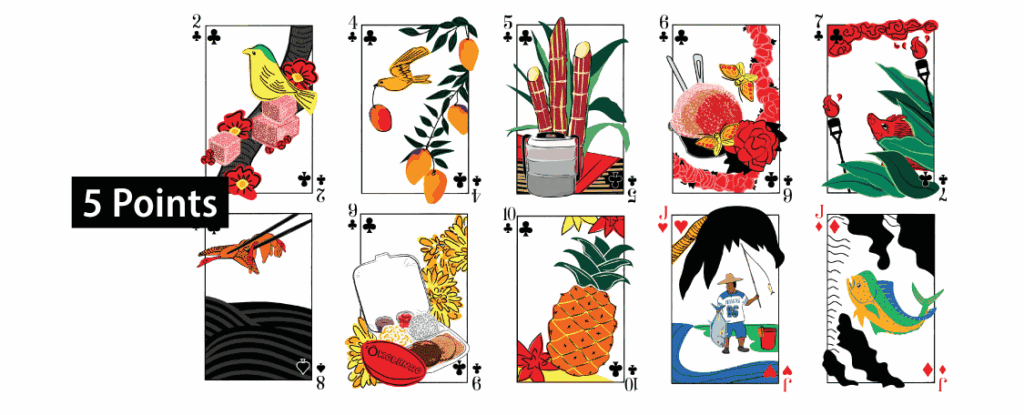
Playing for Points & Yaku Combinations
If you’re playing for both points and yaku, the strategy shifts to focusing and creating yakus. Key elements include knowing which cards can form multiple yakus, blocking your opponent’s opportunities, and balancing your own strategy with awareness of your opponent’s moves.
There are 8 yaku in Sakura (Hawaiian Hanafuda), each consisting of 3 cards. For each yaku a player has at the end of a round, 50 points are subtracted from each opponent’s score rather than being added to one’s own score.
The player with the highest score becomes the dealer for the next round. The game ends after the agreed number of rounds or until the agreed time limit expires. The highest total score of all the rounds combined wins.

Breaking A Tie Score
If there is a tie with the dealer, the dealer wins. In all other ties, the player closest to the dealer’s right wins. This applies to all game play variations.
Scoring Variation called “Victory Scoring”
Whenever a player wins a round, it is counted as a single (1) victory point, and once the agreed-upon number of rounds has been played, the player with the most victories wins the game.
- Chu Victory – If a player wins and their score is 50 (or more) points higher than their opponent(s), then it is count-ed as a double victory. Therefore instead of gaining 1 victory point, the winner gets 2 victory points.
- Basa Victory – If a player wins and their score is 100 (or more) points higher than their opponent(s), then it is counted as a triple victory. Therefore instead of gaining 1 victory point, the winner gets 3 victory points.
- Author Side Note: Our family just used a Basa Victory really just for bragging rights and had no effect on scoring. Therefore, players can opt to just declare loudly and proudly “Basa!” to celebrate your win. And if the defeat was really significant and you want to emphasize your opponent’s defeat, you can shout “O-Basa!!!”
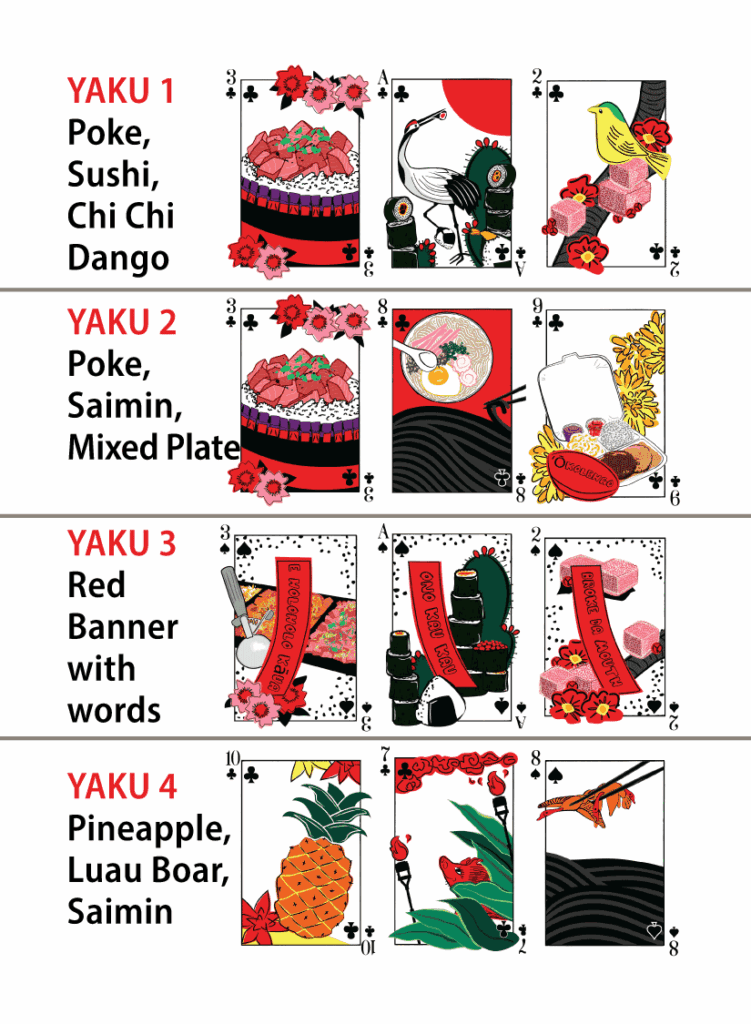
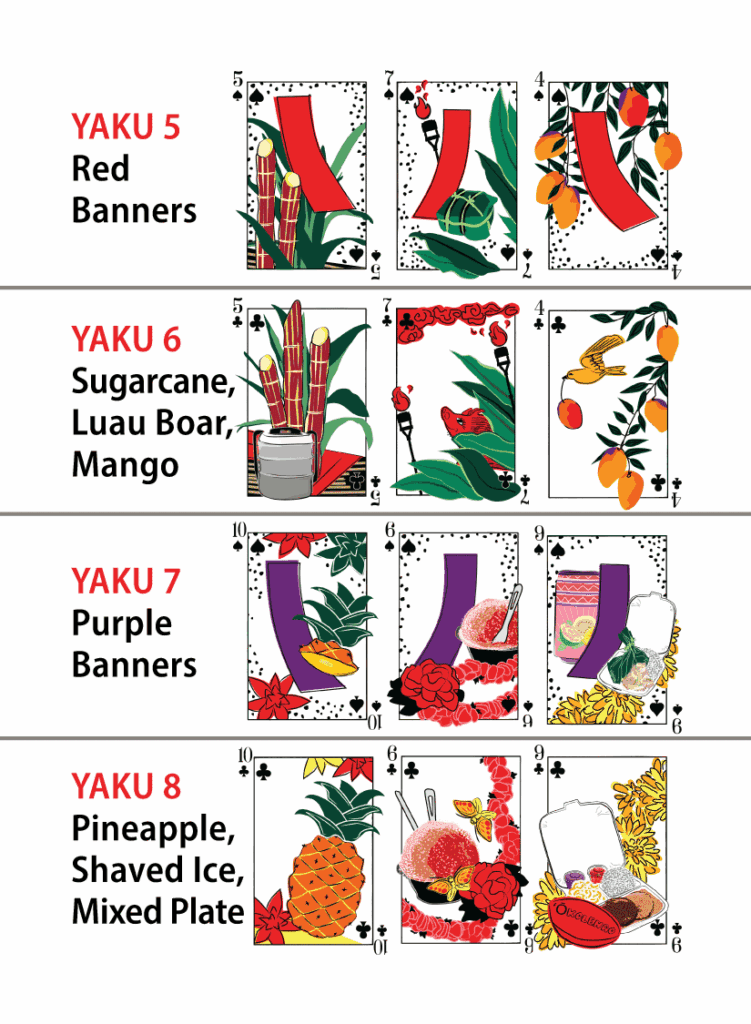
Hiki Rules
Hiki Definition: If a player is initially dealt all four cards of a suit (any combo of hand + field)
A Hiki (Pronounced He-Key), happens if a player is initially dealt all four cards of a suit (any combo of Hand + Field). When this happens, those cards are guaranteed to that player.
- The player must declare before play starts that they have a Hiki, BUT they do not specify which cards on the field are a part of the Hiki. They simply state they have one… “I’ve got a Hiki.”
- The player cannot show their teammates which Hiki they have.
- During the player’s turn, they can play their Hiki card from their hand to collect all the cards of that suit. Then they draw a card from the draw pile as normal.
- The player can choose any time during the game to play their Hiki cards, as long as it’s their turn.
- The Gaji card from another opponent cannot claim any cards that belong to the Hiki.
- If four cards of the same suit appear face up on the field when the dealer initially deals out the cards at the beginning of the round, the dealer gets to keep them.
Gaji Rules (Wild Card)
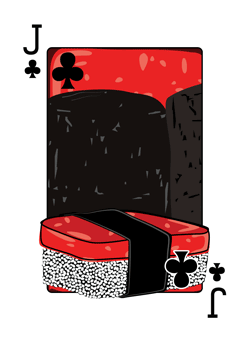
The Gaji (pronounced God-Gee), also known as the Lightning card in other Hanafuda games. In the Hanafooda Hawaii Grinds playing cards, it’s been re-imaged as the popular Spam Musubi sushi.
- If initially dealt to you in your hand, it’s a wild card. It can match with and take any Field card (but cannot take a Hiki). The player can use the Gaji card at any point in the game, as long as it’s their turn.
- If a player draws the Gaji card, it is a wild card and they must play it right away on the Field. HOWEVER, If no match is made, the Gaji card remains face up on the field and this means it is not a wild card anymore and must be treated like any other card. Now, only other cards within its own suit can match with it.
- HOWEVER, If no match is made, the Gaji card remains face up on the Field and this means it is not a wild card anymore and must be treated like any other card. Now, only other cards within its own suit can match with it.
- Gaji & Hiki Rules: Because a Hiki is secret, another player may attempt to use the Gaji card to capture a Hiki card on the field. But the Gaji cannot capture any cards belonging to a Hiki. If a player tries to use the Gaji on a Hiki, the owner of the Hiki must announce those cards are a part of a Hiki. At this point, the owner of the Gaji must target a different card or simply leave the Gaji on the Field.
- Pro Tip for using the Gaji: When used as a wild card to capture a card from a different suit, leave the Gaji on top of the card in your point section. This reminds everyone that at the end of the game any point cards left over from this captured suit goes to the player that used the Gaji card. Additionally, any leftover cards from the Gaji suit goes to the player that used the Gaji
What is Hanafuda and Sakura?
Just as with a poker deck, where you can play different games like Texas Hold’ em, Rummy or even Go Fish, A Hanafuda card deck can be used for different games. Hanafuda Hawaii Grinds focuses on the Hanafuda game called Sakura, also known as Hawaiian Hanafuda. Sakura is a Hanafuda card game popular in Hawaii, best suited for 2-4 players but can accommodate up to 7 players. Unlike many Hanafuda games with a 3-player limit, Sakura supports larger groups and even team play, making it a versatile and social option
A Hanafuda deck is similar to a standard poker deck in that, like poker cards, it can be used to play a variety of games, each with different rules and objectives. While a standard poker deck is made up of 52 cards divided into four suits (hearts, diamonds, clubs, and spades), A Hanafuda deck has 48 cards divided into 12 suits, with each suit representing a month of the year and containing various cards with different points or abilities.
Why is it called SAKURA?
The name “Sakura” comes from one of its most powerful cards, the “Curtain Card”. In traditional Hanafuda decks it’s the card featuring red and pink cherry blossoms with a curtain. In the HanaFooda Hawaii Deck, it’s the card with Poke and Rice bowl and cherry blossoms. It’s worth 20 points & included in two Yaku sets. Some players consider it a very powerful card when playing for Points and Yaku.
The name evolved from Japanese agricultural laborers immigrating to the Hawaiian island in 1900s. If you want to read more history and evolution of Hawaiian Hanafuda, I wrote a short post about it.